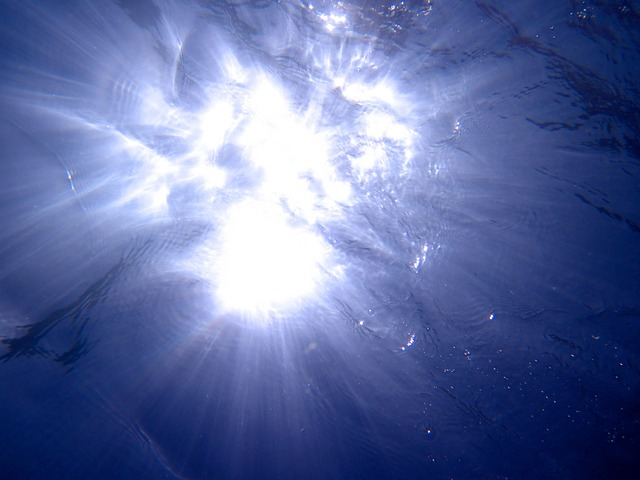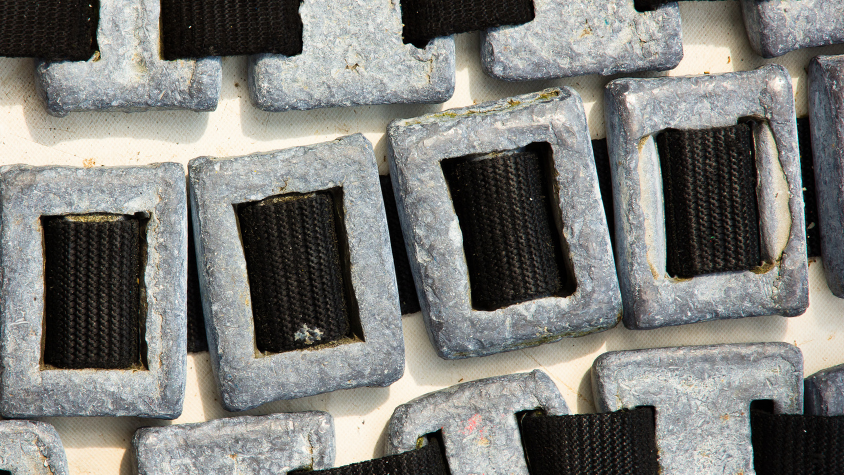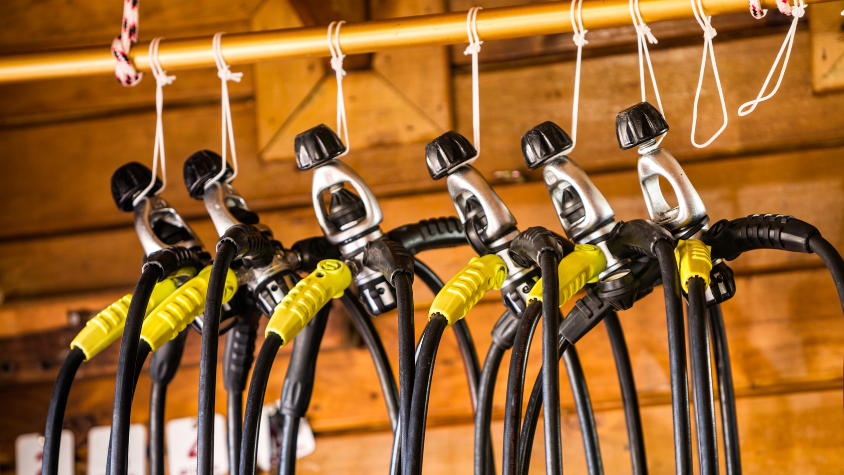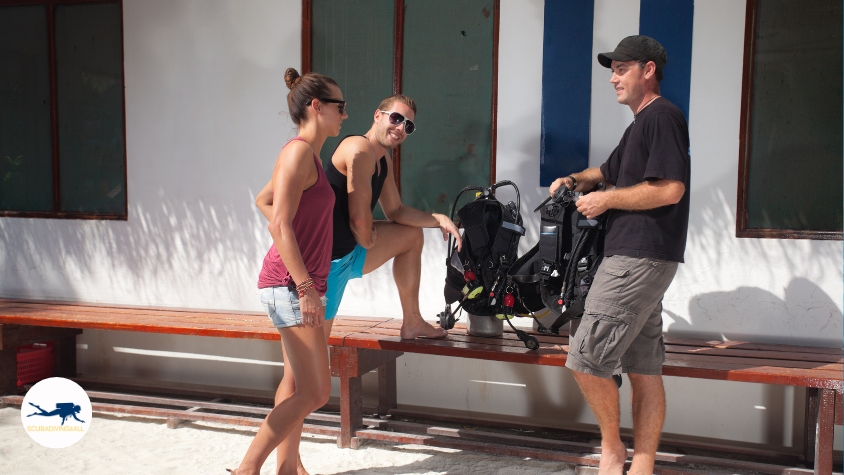For the brave and adventurous, diving deeper into the depths of our oceans holds a wealth of mystery and excitement. It is essential to possess specialized training as well as suitable gear before attempting any deep dive below sea level. In this blog post, we are going to uncover all that you need to know (from safety regulations through to advanced techniques) for those daring enough who wish to plunge down to search secrets at great depth!
Key Takeaways
Obtain a deep diving certification to explore depths beyond 40 meters safely and effectively.
Safety precautions such as decompression stops, awareness of nitrogen narcosis symptoms, and specialized equipment are essential for deep dives.
Building experience is key to successful deep diving. Records showcase what can be achieved with proper training and dedication.
Deep Diving Essentials

Due to potential risks associated with this type of activity (e.g. nitrogen narcosis or decompression sickness), precautions must be taken when doing so. From using proper gear like back-up lights & computers through observing safety protocols during planning all the way until completing your dive safely!
Recreational vs. Technical Diving
Recreational divers usually dive up to 40 meters below the surface while breathing compressed air and exploring underwater without any specialist knowledge or equipment. PADI, a well-known recreational diving organization, has set this as its maximum depth limit. On the contrary, technical dives take people Into very deep water where they need advanced training and specialized gear like special gas mixtures to manage problems related with nitrogen narcosis and oxygen toxicity associated with greater depths that are inaccessible for general diver population who stick within limits of recreational diving agencies.
Deep Dive Certifications
Divers looking to explore the depths of deep waters must obtain a certificate from an accredited authority like PADI or SSI, which grant Deep Diver certifications. To be eligible for enrolling in such courses, with either organization – Adventure diver rating and 4 logged open water dives are needed along with being at least 15 years old for PADI. Whereas, 10-year-olds can participate under parental consent when taking part in SDI’s program that demands having 2 recorded dive experiences as well as possessing Open Water Scuba certification plus 18 years of age minimum requirement.
The course offers divers appropriate training, so they can experience diving up to 40 meters without decompression while also gaining insight into techniques used and learning how to counteract nitrogen narcosis risks associated mainly when venturing deeper than one’s registered level – since this would not only endanger oneself but could even result on invalidating any insurance coverage arranged before the venture took place.
Safety Precautions for Deep Dives
As one descends into the ocean’s depths, safety is a priority for divers. Two major ways of avoiding harm during deep dives are planning decompression stops and being aware of nitrogen narcosis symptoms. By scheduling pauses to allow bodies time to slowly let go of nitrogen that may otherwise cause bubbles in joints and lead to decompression sickness, preventative action can be taken before any damage occurs.
Divers must also know how their body reacts when exposed to high levels of dissolved gas like nitrogen, which sometimes leads to disorientation or impaired judgement – both signs associated with Nitrogen Narcosis Syndrome. So they should recognize those indicators swiftly then swim towards shallower waters as an antidote, allowing them to continue safely exploring all hidden marine gems within deeper parts at ease.
Decompression Stops
Deep diving safety requires making decompression stops at certain depths during ascent for the body to release nitrogen over time and avoid potential issues with decompression sickness. This could include a few minutes of stopping or up to an hour based on how deep the dive was and its duration. Neglecting these rests will result in bubbles forming within one’s bloodstream caused by too rapid climbing out from deeper areas.
In order that safe practices are carried out, divers should carefully plan their dives accordingly, have extended breaks throughout ascending as well as make sure they hold depth even more strictly when going through deep water (especially if it is cold) while using devices like stop watches may help them remain stationary underwater whenever doing these necessary pauses.
Nitrogen Narcosis Awareness
Deep dives can cause nitrogen narcosis, a state of euphoria and overconfidence leading to memory impairment, disorientation similar to alcohol intoxication. With increased depth, the effects become more intense, so it’s important for divers to be aware of its potential danger. If symptoms such as tingling fingers or dizziness are noticed during deep diving excursions, then they should rise back up into shallower depths to ease off these impacts from nitrogen narcosis. For safe and enjoyable immersion experience, dive masters need vigilant monitoring when managing these conditions related with going too far down beneath the waves
Essential Deep Diving Equipment
When taking part in a deep dive, having the right knowledge and training is not enough, specialized equipment must also be brought to ensure a safe exploration. This includes breathing gas mixtures like Trimix which lessen potential for both nitrogen narcosis and oxygen toxicity that can occur while diving at deeper levels.
Divers should bring extra gear as back up when delving into these depths. This way they will have lights or air sources on hand if needed during their dives below.
Breathing Gas Mixtures
As divers plunge deeper, the pressure of gases in their breathing mixture escalates, causing an increased danger from nitrogen narcosis and oxygen toxicity. To prevent these risks, special gas mixtures like Trimix which contain a fraction of helium rather than solely nitrogen can be utilized to lower both issues when deep diving at its utmost depths.
With employing suitable respiratory gas mixtures, dives into profound waters are not only safer but also more enjoyable for explorers. By mitigating associated dangers that come with Depth and greater pressure, dive safely yet confidently into our oceans’ depths by utilizing applicable breathable mixes.
Redundancy and Back-up Gear
When deep diving, it is critical to take extra safety precautions by bringing additional back-up equipment. A back-up dive light ensures that divers remain in contact and can see when visibility diminishes or during night dives. A supplementary air source such as a small cylinder or pony bottle gives an added reserve of breathing gas if emergencies arise while underwater. Divers may also choose to place a decompression tank at the safety stop level, which provides Security on ascent with compressed air breaths taken for this purpose.
Complete preparation, including having appropriate back-up gear, all helps ensure that every outing into the depths results in safe, enjoyable experiences for those taking part in each dive adventure.
Preparing for Your First Deep Dive
Taking the plunge and embarking on a deep dive for the first time can be thrilling, It is crucial to thoroughly prepare to make sure that each dive is safe and pleasurable. Select an appropriate diving spot with enough scope for your skill level which should offer deeper explorations as you go along, making use of experienced divers or teachers who will aid in advancing those dives further.
Learning proper scuba techniques like equalizing pressure within ears, clearing masks correctly, maintaining neutral buoyancy are essential abilities when preparing adequately before jumping into open waters-creating suitable plans pre-dive, double-checking safety regulations among other measures prior also being vital steps needed taken.
Dive Site Selection
When planning your first deep dive, it is important to consider the appropriate selection of a diving site. Parameters such as depth, terrain type and visibility need to be considered, as well as any possible currents or marine life which may be encountered during the activity. It’s essential that you pick an area suitable for all experience levels (in accordance with regulations and safety protocols) so you can both appreciate exploration opportunities while also limiting risks associated with deeper dives. As confidence increases over time, along with the expertise level achieved through practicing these kinds of activities at different sites. Challenges posed by more demanding spots will gradually become available, allowing divers to push their individual limits safely.
Building Experience
Preparing for your first deep dive, it is important to gradually gain experience. Start by diving in various settings and with different people. As you get more comfortable, progress to deeper depths at challenging sites while still following safety protocols such as attending briefings, conducting buddy checks and keeping track of pressure levels. With help from experienced divers or instructors along the way will enable you to be ready to take on what lies beneath upon reaching the desired depth range for your dive’s exploration into unknown territories awaiting discovery!
Advanced Deep Diving Techniques
As your deep diving experience grows, you may become attracted to more advanced techniques such as decompression and the utilization of specialized apparatus like rebreathers or side mounts. These enable divers to go Down into greater depths, while also allowing them a longer stay underwater – an opportunity for extensive explorations of our oceans’ secluded secrets.
Yet, along with these technological advantages come heightened hazards that must be taken seriously by any diver who wishes to partake in advanced dives. Seeking out proper instruction and having sufficient practice is critical before attempting challenging dives with sophisticated equipment.
Decompression Diving
When it comes to deep diving, decompression is a key factor. Decompression dives necessitate carefully managing nitrogen levels with meticulous stops and the right mixture of gases for optimum safety. This means divers can plunge into greater depths without being vulnerable to decompression sickness. These pauses (from merely minutes until an hour in length) allow Nitrogen to be gradually released from their bodies, so they don’t form hazardous gas bubbles as well.
For complete assurance whilst engaging in this type of diving activity, dive tables should always be adhered strictly too. Along with monitoring your gas mixtures vigilantly and utilizing redundant security devices such as additional equipment or instruments throughout each stage of the descent. This will ensure that adventurers can take full advantage of their underwater world by exploring its depth safely while still having maximum exhilaration!
Using Rebreathers and Sidemounts
For deeper dives, divers require specialized equipment such as rebreathers and side mounts. Rebreather systems recycle the diver’s exhaled breath, which reduces gas consumption, allowing longer underwater journeys to take place. Sidemount scuba diving configurations attach cylinders on either side of a diver instead of at their back, making them more agile in deep waters with easier access to spare tanks.
Using this type of technology requires certified training from specialists that know all about its potential risks (like running out of air or being stuck under) but, when used correctly, it can be incredibly rewarding for those brave enough to explore our mysterious ocean depths while keeping themselves safe doing so!
Deep Diving Records and Achievements
Divers from around the globe have pushed boundaries and achieved remarkable feats through deep dives, stretching human capability to new heights. Records for these courageous expeditions include the deepest scuba dive ever recorded at 332.35 meters below sea level and a record wreck diving depth of 205 meters. Admirable accomplishments proving just what is possible with adequate skill, strength and determination.
Stories highlighting successes in this realm serve as an inspirational reminder that anything can be conquered when faced bravely – whether it’s conquering obstacles or unlocking secrets within our oceans’ depths. It’s wonderful how far humans will go when they embrace their resilience as well the charms of exploring underwater realms firsthand!
World Record Deep Dives
Deep diving has seen many impressive records and accomplishments that demonstrate the powers of divers as well as their equipment. The highest dive recorded stands at a staggering 332.35 meters, showing off both human stamina capabilities and cutting-edge advancement in scuba technology.
Another remarkable milestone is 205 meters for deep wreck dives, where divers have discovered sunken ships or planes – uncovering tales trapped underneath the ocean’s waves which astound those who hear them. This world record setting performance encourages future generations to go With underwater exploration, motivating, inspiring all around it.
Inspiring Deep Diving Stories
The stories of deep divers embody courage, dedication and exploration. From exploring the astonishingly clear waters at Lighthouse Reef Blue Hole in Belize to taking on the treacherous yet alluring dive site that is The Blue Hole in Dahab Egypt. Those who take part are exhibiting great tenacity and pushing their own limitations when navigating these depths. This serves as a reminder that there is beauty beneath our oceans worth discovering for anyone willing to push themselves beyond what they thought possible before venturing into this unknown realm.
Summary
The pursuit of deep diving is a thrilling yet complex activity which necessitates proper guidance, security protocols and suitable gear. With the ambition to discover what lies underneath our oceans, divers must accrue knowledge and practice their skills to ascend safely into greater depths. Stories from those who have already ventured forth offer insight for Exploration that will enable everyone interested in this daring adventure to properly unlock these hidden mysteries below sea level. Deep diving serves as an example of humanity’s innate curiosity while allowing us to push new frontiers of human discovery at all times.
Frequently Asked Questions
What is deep diving called?
Technical diving, or deep diving, is an extended form of scuba diving which includes the use of special gas mixtures and involves going beyond recreational limits when it comes to depth and duration. It necessitates Qualifications than regular scuba trips that don’t exceed depths shallower than 60ft (18m).
How deep can deep divers go?
Recreational divers can plunge to a depth of 130 feet (40m), while technical scuba enthusiasts might go From 170 up to 350 feet.
What is Deep Dive?
Deep Dive is a powerful system engineered to leverage the value from unstructured data, using advanced techniques to generate insights out of text, tables, figures and images that traditional software can’t handle.
What is the deepest dive you can do?
Divers can push themselves to extreme depths of around 350 feet, and some even venture deeper! Technical divers are particularly renowned for being able to brave the deepest dives.
What is the difference between recreational and technical diving?
Diving, both recreational and technical, requires specialized equipment. The depths at which these activities are done differ. While recreation diving is typically at a depth of 40 meters or fewer, technical divers go beyond that to 60 meters or more – hence necessitating additional training.


